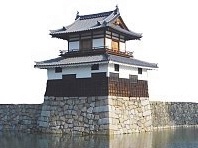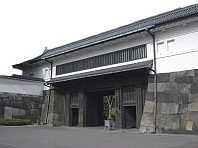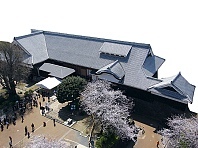History of Castles
Fortresses have been built in Japan since early times. A particular need for castles arose in the 15th century after the central government’s authority had weakened and Japan had fallen into the chaotic era of warring states (sengoku jidai). During that era, Japan consisted of dozens of small independent states which fought each other and built small castles on top of mountains for defense purposes.
When Oda Nobunaga reestablished a central authority over Japan in the second half of the 16th century, and his successor Toyotomi Hideyoshi completed the reunification of Japan, many larger castles were built across the country. Unlike the earlier castles, they were built in the plains or on small hills in the plains, where they served as a region’s administrative and military headquarters and a symbol of authority. They became the centers of “castle towns”.
After the end of the feudal age (1868), many castles were destroyed as unwelcome relics of the past or were lost in World War II. Only a dozen “original castles”, i.e. castles with a main keep that dates from the feudal era (before 1868), survive today. Furthermore, several dozen castles were reconstructed over the past decades – mostly using concrete instead of traditional building materials.
Castle Structures and Castle Towns
The typical castle consisted of multiple rings of defense, with the so called honmaru (“main circle”) in the center followed by the ninomaru (“second circle”) and possibly some additional circles of defense. The castle tower stood in the honmaru, while the lords usually lived in a more comfortable palace residence in the honmaru or ninomaru.
In the town around the castle, the samurai were residing. The higher their rank, the closer they lived to the castle. Merchants and artisans lived in specially designated areas, while temple and entertainment districts were usually located in the outskirts of the city or just outside of it. Tokyo and Kanazawa are two good examples among many Japanese cities which evolved as castle towns.
The main construction material for castle buildings used to be wood, as can be witnessed when visiting the interior of one of the surviving original castles. Most newer reconstructions, however, were made of concrete, and their interiors are modern. Many castles now house a museum.
The following are some typical castle structures:
 Castle Tower (Tenshukaku)
Castle Tower (Tenshukaku)
Example: castle tower of Kumamoto Castle
Also known as donjon or castle keep, this is the innermost, best defended and most prominent structure of a castle. Most castle towers have between two to five stories, and there are often more floors inside than there are stories on the outside.
 Walls and Moats
Walls and Moats
Example: Castle walls and moat of Osaka Castle
Several rings of walls and moats serve as the main defense measure of castles. Osaka Castle and the former Edo Castle (now Tokyo’s Imperial Palace) offer the most impressive examples.
 Guard Towers (Yagura)
Guard Towers (Yagura)
Example: a guard tower of Hiroshima Castle
Also known as turrets, these are watch towers and storage rooms along the castle walls, often placed at the corners. Castles usually have multiple guard towers. They are much smaller in size than the main castle tower and are usually made up of two floors.
 Gates
Gates
Example: Sakurada Gate of the former Edo Castle
Castles have a number of well defended entrance gates. The typical castle gate consists of two gates which are placed at a 90 degree angle to each other, creating a small inner yard which is heavily defended from all sides.
 Palace (Goten)
Palace (Goten)
Example: partially reconstructed palace of Kumamoto Castle
The palace houses the lord’s residence and offices. Most castles have lost their palace over time. A rare surviving example is the Ninomaru Palace of Nijo Castle. Among the few castles with reconstructed palaces are Kumamoto Castle, Hikone Castle and Nagoya Castle.

![3501_11[1] 3501_11[1]](https://japan.sakuratraveleg.com/wp-content/uploads/2021/09/3501_111.jpg)
![6051_top[1] 6051_top[1]](https://japan.sakuratraveleg.com/wp-content/uploads/2021/09/6051_top1.jpg)
![5777_01[1] 5777_01[1]](https://japan.sakuratraveleg.com/wp-content/uploads/2021/09/5777_011.jpg)
![5801_01[1] 5801_01[1]](https://japan.sakuratraveleg.com/wp-content/uploads/2021/09/5801_011.jpg)
![7001_11[1] 7001_11[1]](https://japan.sakuratraveleg.com/wp-content/uploads/2021/09/7001_111.jpg)
![3700_01[1] 3700_01[1]](https://japan.sakuratraveleg.com/wp-content/uploads/2021/09/3700_011.jpg)
![3351_01[1] 3351_01[1]](https://japan.sakuratraveleg.com/wp-content/uploads/2021/09/3351_011.jpg)
![5601_11[1] 5601_11[1]](https://japan.sakuratraveleg.com/wp-content/uploads/2021/09/5601_111.jpg)
![5577_11[1] 5577_11[1]](https://japan.sakuratraveleg.com/wp-content/uploads/2021/09/5577_111.jpg)